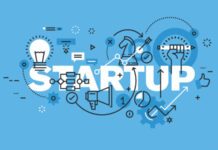New Technology and software continue to evolve as HR software continues to evolve. The design features also seem to improve with the changes in HR landscape. Some of the technologies that have changed the face of IT are Cloud technology, change in talent management and Digital Disruption. It is also changing the way that businesses handle the HR processes. It is mandatory to choose software that will help in serving the current processes while also being adaptable for the future. Based on the businesses process, the individual software trends could or could not be a good fit for the organization. There is a need to consider the current position as well as determine where the organization and the industry are headed.
Technology trends that will shape your organization
HR Technology is going through a disruptive period where investors are looking for the big breakthrough in which they can invest. In 2016, they had invested more than $2 Billion into HR platforms and in Tech Systems. The industry’s volatility can be explained by the huge amount of money spent on HRMS. Organizations have even shifted from cloud to mobile with this instability. This instability is also driven by artificial intelligence and the explosion in analytics. There has been the emergence of social and video recruiting as well as workplace wearable. Technology is rapidly changing and the technology that HR use is also changing along with it. The experience that the systems offer along with the software design that underlies it all also changes. HR systems that were originally used seem to be outdated. Learn more about M&A Technology Trends In 2021.
1. Performance Management
The organizational structure seems to be moving towards a team-based collaboration and companies require the management to support communication and integration. The feedback system also seems to promote this structure. There are feedback apps and social media as well as activities which help in making the employees efficient. There are also gamification elements that managers have recently adopted to improve communication. The tools that replicate the activities that the employees engage in when they are outside of work are typically the work processes that are most effective. Companies have been obsessively making the system agile and performance management is done by the team rather than by hierarchy, allowing dynamic team management. They also have pulse surveys and end-of-period surveys. Development plans are based on the data that employees had previously derived, making it easy to build. There are a number of online assessments that are featured.
Related Post: Professional burnout: what it is and how to deal with it?
2. Digital Solutions
HR industry is being transformed by Digital Technology. There are embedded analytics and mobile apps along with videos which have the power to shape culture as well as make the HR process more streamlined. It also successfully sets the stage up to make it more productive and make sure the workforce is engaged consistently. Digital HR is viewed as a holistic platform and not as a collection of individual elements. This puts it well ahead of the game in digital disruption. The entire employee process becomes digital, right from joining and hiring to exit. Everything from pre-hire assessment, interviewing, onboarding and orientation to the training and mentoring period are automated. Shifting from one job to another and transitions and assessments also becomes a routine that is made completely digital. Retirement options can also be explored from your smartphone. With the alumni network, the employee can continue his relationship with the organization.
3. Adaptability
Users should adopt new programs quickly and intuitively to make the new program effective. Team integration and collaboration, as well as tools that help in talent management, are the best tools to look into. It is also important to focus on factors like video learning, goal management, productivity management, feedback, and onboarding. By maximizing the potential in all these factors, the employee experience can also be improved and the products developed are of exceptional functionality. The system must be easy to adapt to and the user interface should fundamentally be simple. The HR tech should also be capable of finding strong candidates for the job, brand themselves, make job postings and pre-hire skills and assessments should be conducted. The complex processes involved in recruiting should all be handled with minimal input from the user, which makes it easy to work .
Related Post: 6 ways to fall in your love with your work all over again
4. Analytics and Reporting
With the help of data, it is possible to understand the current workforce, potential new hires as well as strategies for recruitment. The framework for ACA compliance as well as other reporting requirements is also studied. HR Analyst, Josh Bersin, says that the key responsibility of HR is to harness and interpret data about employees. Software that can mine data and deliver reports and analytics is important as they will meet the compliance requirements and create team strategies that are more effective. It is also important for the delivery of reports and analytics and meeting the requirements to comply. Data mining will also make team strategies more effective and deliver strong culture. Productivity can also be increased. Recent trend shows that workforce management system supports this way of working and systems like Fieldglass from SAP, Beeline management, Workday, and Kronos are used. These options are being explored by HR professionals to find new work and talent. Tools are also being built in technical domains.
5. Configurability
When it comes to HR software, one size does not fit all as different organizations have different goals and needs. With the help of cloud technologies, configurability has become easier as companies can configure the software to serve their process and operations as well as improve the efficiency. The software has also become so customizable and independent that the employees can on board themselves, find mentors nearby and everything according to the norms and the requirement of the organization. A natural language robot drives the entire experience and it has been successful in ensuring employee engagement.
Disruption has become common in the HR market. Since mobile computing, sensors, video and artificial intelligence have all converged; the focus has shifted to employee engagement, wellness, productivity, and culture. This has resulted in the redefinition of HR technology and what HR can do.
Related Post: 4 ways to find your professional calling after college

























































